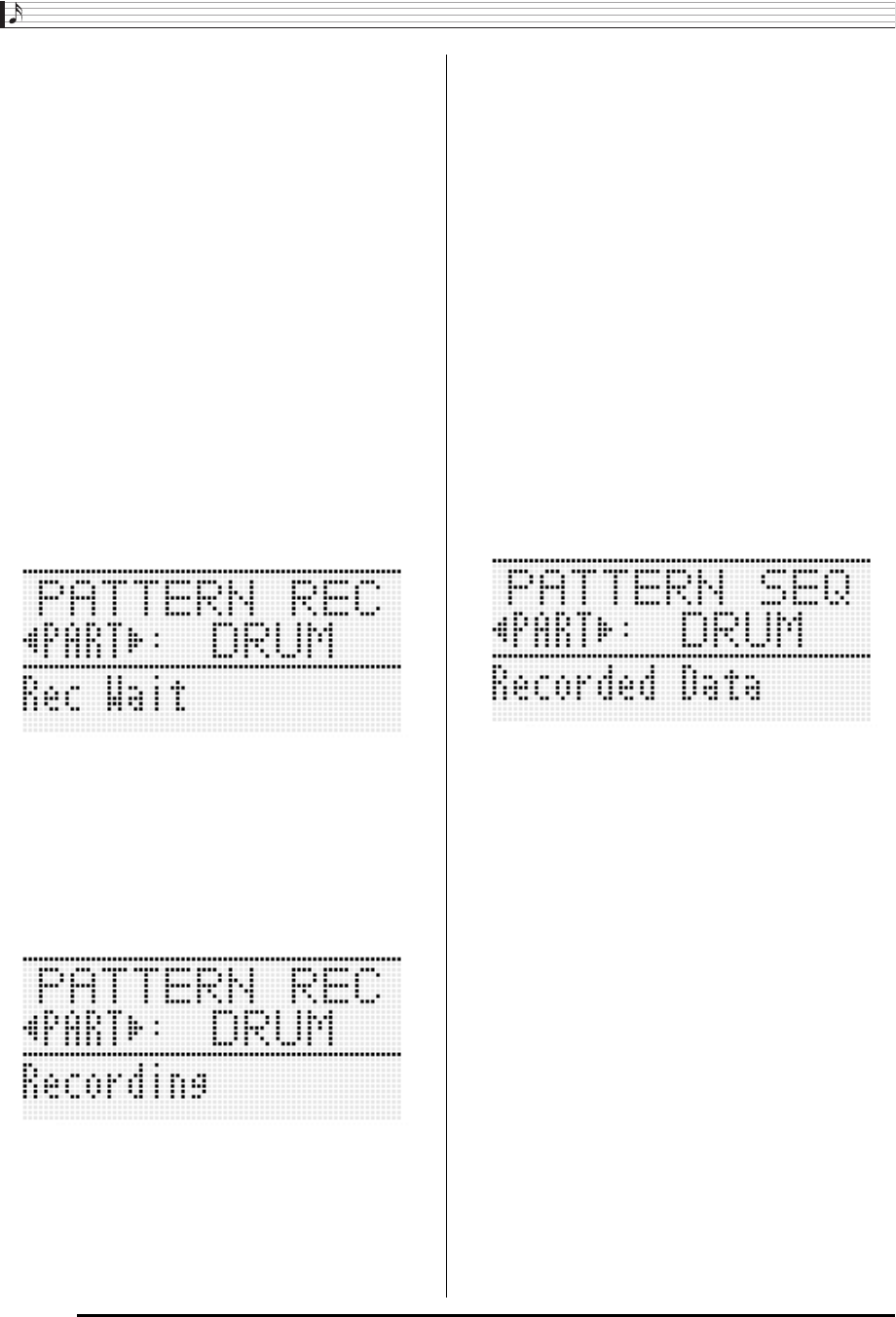
Using the Pattern Sequencer
E-110
6.
Configure mixer settings for the selected
instrument part. You can skip this step if you do
not want to configure mixer settings.
• For details about mixer setting operations, see step 5
under “To edit an existing rhythm” (page E-107).
7.
Configure part parameter settings for the
selected instrument part. You can skip this step
if you do not want to configure part parameter
settings.
• You also will be able to configure part parameter
settings after recording, if you want. If you want to
perform PITCH BEND (S-1) wheel operations while
recording, it is a good idea to configure the bend range
beforehand.
• For details, see “Configuring Instrument Part Playback
Settings (Part Parameters)” (page E-116).
8.
If you want to record notes you play on the
keyboard in real time, perform the following
steps.
9.
If required, perform the procedure under “To
edit events with the pattern sequencer” (page
E-115).
• You can make fine corrections to the notes you played
on the keyboard and add new notes, if you want. For
details, see “Editing Individual Events (Event Editor)”
(page E-113).
10.
Repeat steps 5 through 9 for all of the parts you
want to record.
11.
After completing all of the editing you want,
adjust the tempo of the rhythm as desired.
• The tempo you set here becomes the initial default
tempo of the accompaniment pattern.
12.
For details about how to save the final version
of the rhythm as a user rhythm, see “To store
an edited or newly created rhythm” (page
E-111).
(1) Press the C-3 (RECORD) button.
• The button will start to flash and the Digital
Keyboard will enter record standby.
• You can press the C-3 (RECORD) button again
here to exit record standby (button goes from lit to
unlit).
(2) To start recording while the C-3 (RECORD) button
flashing, press the L-16 (START/STOP) button.
• The button will change from flashing to lit, and the
display will show an up-count of measures and
beats. The count will re-start from 001:1 when the
final beat of the number of measures you specified
in step 4 is reached.
(3) Checking the timing (beat and measure) of the
playback, perform keyboard, PITCH BEND (S-1)
wheel, and S-2 (MODULATION) button operations as
required.
• The operations you perform are recorded. What
you record is played back when recording loops
back to the measure and beat where you recorded
a keyboard, pitch bend or modulation operation.
• To delete specific recorded notes, hold down the
C-10 (DELETE) button. When playback reaches
the note you want to delete, press the keyboard
that corresponds to the note to be deleted.
Holding down the C-10 (DELETE) button along
with one or more keyboard keys while playback is
being performed will delete all of the notes that
correspond to the keyboard keys that are played
while the button and keys are held down.
• Until you perform step (4) below, you can layer
keyboard notes and delete recorded notes as many
times as you like.
(4) To stop recording, press the C-3 (RECORD) button.
• This stops accompaniment pattern playback and
causes the button to go from lit to unlit. The
instrument part status will become “Recorded
Data”.
CTK7200_e.book 110 ページ 2014年3月7日 金曜日 午後3時4分
